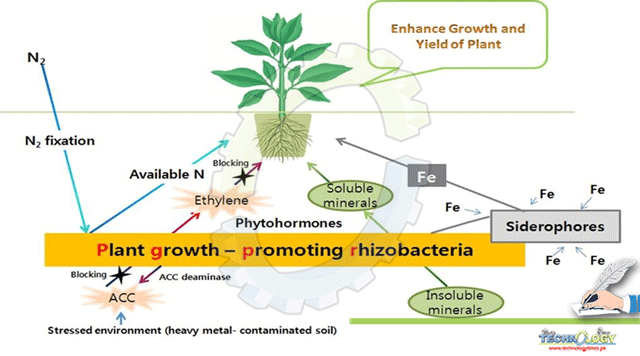By RAFIA NAVEED
Heavy metals are elements with metallic properties (ductility, conductivity, stability as cations, ligand specificity, etc.) and an atomic number >20. The most common heavy metal contaminants are Cd, Cr, Cu, Hg, Pb and Ni. Plants require a number of heavy metals as micronutrients.

Soil pollution by heavy metals
Heavy metal stress greatly decreases crop growth and productivity. It is a major threat in various terrestrial ecosystems worldwide. Currently, extensive industrialization directly increases the accumulation of heavy metals in soils. As a result, these have detrimental effects on crop growth and productivity. Several heavy metals (e.g., Mn, Cu, Co, Zn, Mo, and Ni) are vital for important biological processes. But the excessive accumulation of these heavy metals with other highly toxic heavy metals including Pb, Cd, As, Hg, Cr, and Al can limit crop productivity. The accumulation of heavy metals in soils directly affects the texture and pH of the soil. Consequently, reduction in the growth of plants may occur by exerting detrimental effects on various biological processes in plants.
Several studies have reported the positive role of microorganisms in plant growth and productivity in heavy metal-contaminated soils. Plant growth-promoting rhizobacteria (PGPR) are a group of bacteria that can improve plant growth and productivity. These microorganisms are found predominantly in the rhizosphere. Various PGPR present in the soil around plant roots can facilitate plant growth either by producing various plant growth regulators or providing and facilitating nutrients uptake. PGPR could improve plants tolerance to different abiotic stresses, including heavy metal stress.
Phytoremediation assisted by soil rhizobacteria
Phytoremediation of heavy metals may take one of several forms: phytoextraction, rhizofiltration, Phyto stabilization, and phytovolatilization. Phytoextraction refers to processes in which plants are used to concentrate metals from the soil into the roots and shoots of the plant. While rhizofiltration is the use of plant roots to absorb, concentrate or precipitate metals from effluents. Phyto stabilization is the use of plants to reduce the mobility of heavy metals through absorption and precipitation by plants, thus reducing their bioavailability. Phytovolatilization is the uptake and release into the atmosphere of volatile materials such as mercury- or arsenic-containing compounds
Plant-bacteria interactions
The roots of plants interact with a large number of different microorganisms. With these interactions, roots are major determinants of the extent of phytoremediation. Both the micro partner (plant-associated bacteria) and the host plant can affect functioning of associative plant-bacterial symbioses in heavy-metal-polluted soil. Soil microbes play significant roles in recycling of plant nutrients, maintenance of soil structure and control of plant pests and plant growth. Thus, bacteria can augment the remediation capacity of plants or reduce the phytotoxicity of the contaminated soil. In addition, plants and bacteria can form specific associations. In that association the plant provides the bacteria with a specific carbon source that induces the bacteria to reduce the phytotoxicity of the contaminated soil. Alternatively, plants and bacteria can form nonspecific associations in which normal plant processes stimulate the microbial community, which in the course of normal metabolic activity degrades contaminants in soil. Plants roots can provide root exudate, as well as increase ion solubility. These biochemical mechanisms increase the remediation activity of bacteria associated with plant roots. To sum up, the adaptation capabilities of both partners of the associative symbiosis as well as the bioremediation potential of the microsymbiont are of importance in minimizing the detrimental effect of heavy-metal pollution.
Heavy metal-bacteria interactions
Rhizobacteria shows several traits that can alter heavy metals bioavailability through the release of chelating substances, acidification of the microenvironment, and by influencing changes in redox potential. However, there was a detrimental effect to soil microbial diversity and microbial activities in metal-polluted environments.
Plant-bacteria-soil interactions
The specificity of the plant-bacteria interaction is dependent upon soil conditions. That specifity have the ability to alter contaminant bioavailability, root exudate composition, and nutrient levels. In addition, the metabolic requirements for heavy metals remediation may also dictate the form of the plant-bacteria interaction i.e., specific or nonspecific. Along with metal toxicity, there are often additional factors that limit plant growth in contaminated soils. That factors include arid conditions, lack of soil structure, low water supply and nutrient deficiency.
EFFECT OF RHIZOBACTERIA ON PHYTOREMEDIATION
Plant-growth
Rhizosphere microorganisms, which are closely associated with roots are known as plant growth promoting rhizobacteria (PGPR). Plant growth-promoting rhizobacteria include a diverse group of free-living soil bacteria. These bacteria can improve host plant growth and development in heavy metal contaminated soils by mitigating toxic effects of heavy metals on the plants. Bacteria in the rhizosphere play role in the accumulation of potentially toxic trace elements into plant tissues. Many rhizobacteria are tolerant to heavy metals and play important roles in mobilization or immobilization of heavy metals.
Besides, the microorganism community structure of the rhizosphere population is important in the context of plant growth. It is attributed to the finding that microbial populations often establish some sort of positive cooperation with the host plant system. For example, soil pollution with heavy metals could lead to the appearance of heavy-metal resistant rhizobacteria in the soil of industrial regions. Soil rhizobacteria can also directly influence metal solubility by changing heavy metal speciation in the rhizosphere.
In heavily contaminated soil where the metal content exceeds the limit of plant tolerance, it may be possible to treat plants with plant growth-promoting rhizobacteria. Rhizobacteria can increase plant biomass and thereby stabilizing, revegetating, and remediating metal-polluted soils. Although the use of rhizobacteria in combination with plants could provide high efficiency for phytoremediation. The microbial ecology in the rhizosphere is not yet fully understood.